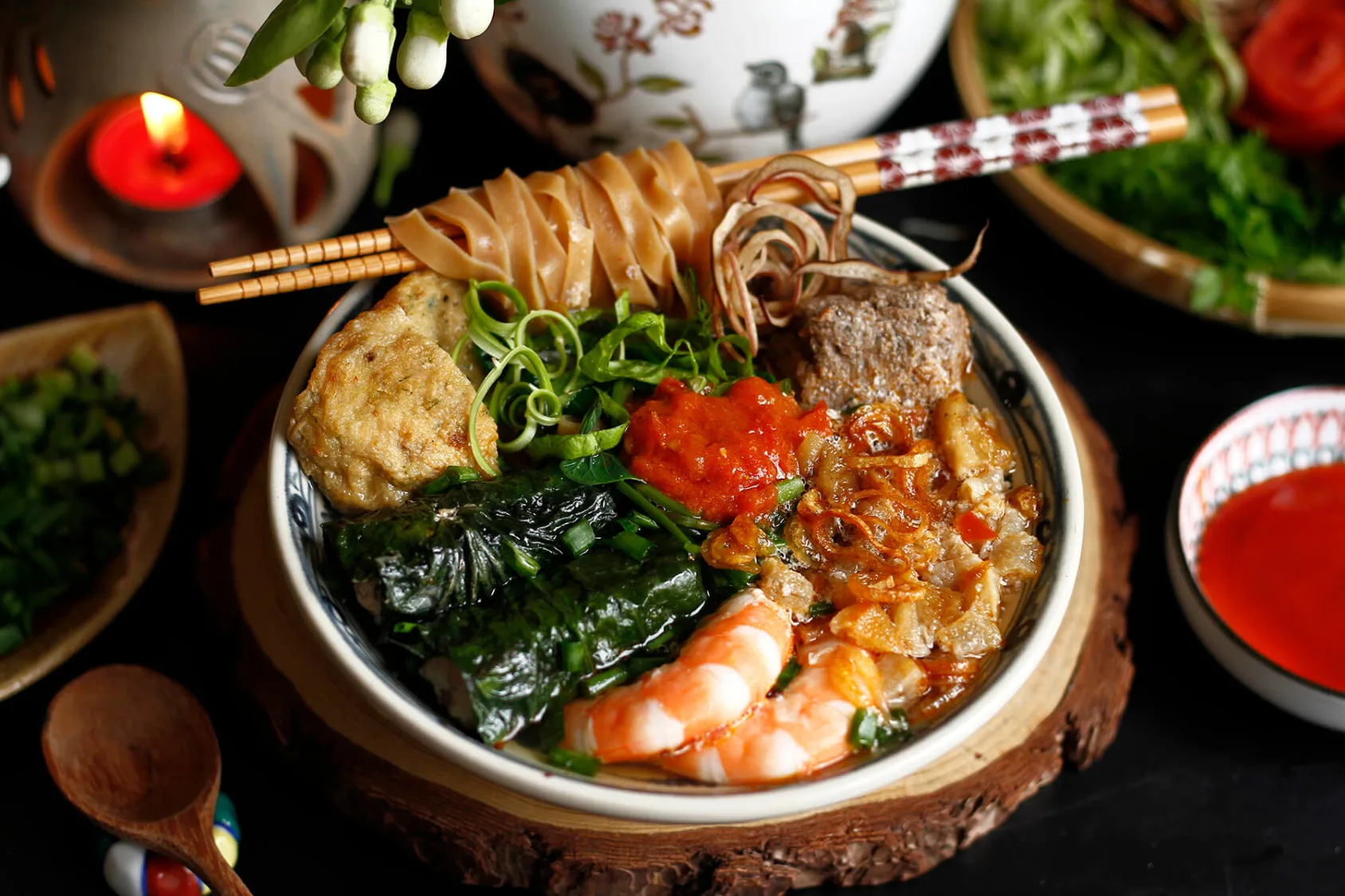
Banh Da Cua
Crab noodle soup with rice paper strips.
Ingredients
- •Rice paper
- •Crab meat
- •Fish balls
- •Morning glory
- •Tomatoes
Instructions
Prepare Broth
Make crab-based soup
Assemble
Add noodles and toppings
Bánh Đa Cua is a beloved noodle soup from Hai Phong, a coastal city in northern Vietnam, featuring a unique combination of brown rice noodles and rich crab-based broth. The dish gets its name from "bánh đa" - the distinctive brown rice paper noodles, and "cua" meaning crab.
This hearty soup has been a staple in Hai Phong for generations, originally created by local cooks who wanted to showcase the region's abundant fresh seafood, particularly the sweet local crab meat. The brown rice noodles used in this dish were traditionally sun-dried, giving them their characteristic dark color and firm texture.
The soul of Bánh Đa Cua lies in its complex broth, which is made by slowly simmering crab shells, pork bones, and dried shrimp with aromatic spices. The brown rice noodles are cooked until just tender, then served in the flavorful broth along with fresh crab meat, fish balls, morning glory, and tomatoes. The dish is typically garnished with fresh herbs, fried shallots, and a sprinkle of black pepper.
While the traditional recipe remains most popular, some variations exist across different regions. Some versions include meatballs, fish cakes, or additional seafood like shrimp or squid. The consistency of the broth can also vary, with some preferring a thicker, more concentrated version.
In Vietnam, Bánh Đa Cua is enjoyed throughout the day but is particularly popular as a breakfast dish or late afternoon snack. It's often served with a side of chili sauce and lime wedges, allowing diners to adjust the flavor to their taste. Some locals also add a dash of rice vinegar for extra tang.
From a nutritional perspective, this dish offers a good balance of carbohydrates from the noodles and protein from the seafood. The crab meat is low in fat and high in omega-3 fatty acids, while the vegetables add essential vitamins and minerals. However, those with shellfish allergies should avoid this dish due to its crab content. The broth can also be quite high in sodium, so individuals watching their salt intake might want to consume it in moderation.
